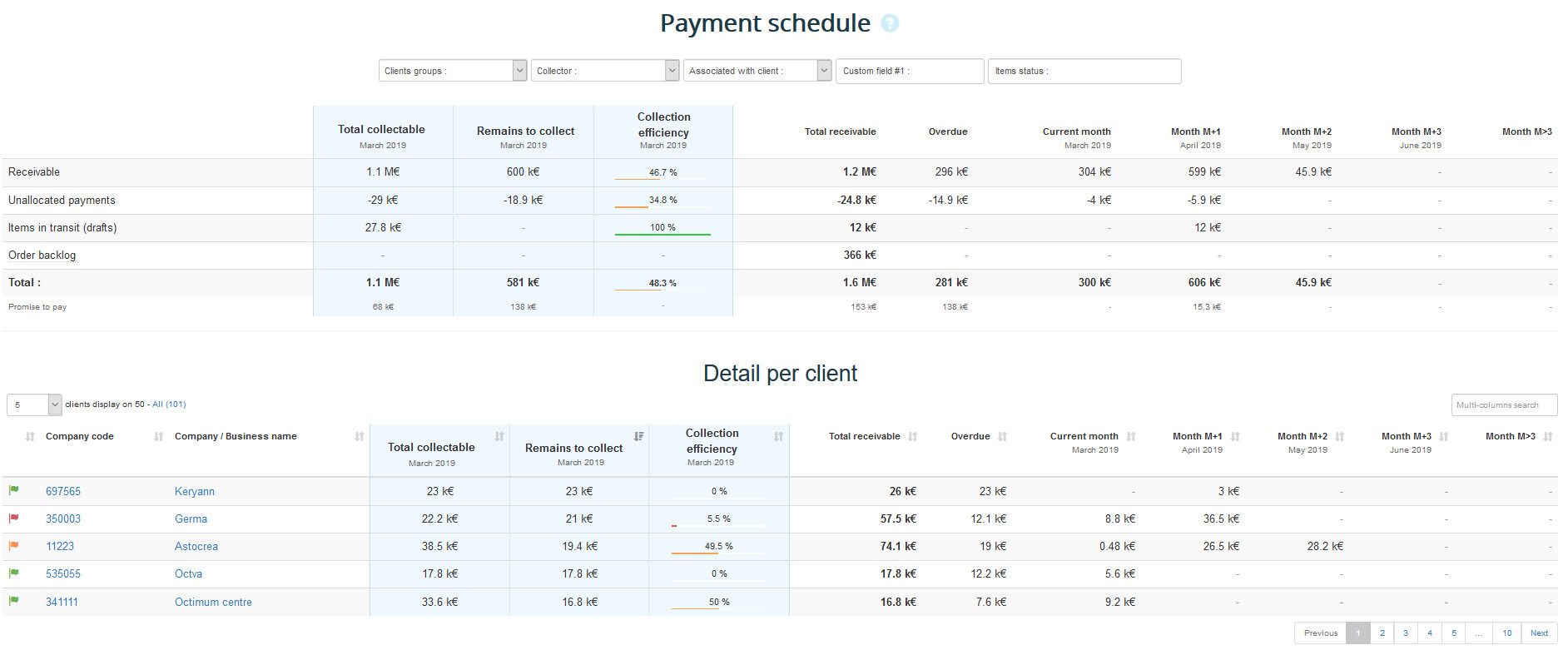Online help
Payment schedule reporting »
What is the payment schedule report?
The payment schedule report provides several useful information for cash collection and credit risk management.
The collection efficiency rate is an indicator of self-assessment and self-stimulation for collectors. It shows the part of the amounts recovered over the current month in relation to the total amount to be recovered (overdue + items that becomes due on the month).
This rate is close to 0% on the first day of the month, then progresses according to the collections made. The goal is to move towards 100%, which would indicate that the entire due amounts over the past and current months have been cleared.

The payment schedule report splits the not yet due transactions by tranches, unlike the aging balance which splits the overdue receivables.
When amounts that are not due yet will be due?
The tranches are:
- It indicates the total collectable in the current month, which becomes the monthly recovery target in amount, as well as the collection efficiency rate, which specifies the progress in achieving this objective on a daily basis.
- It allows to display a breakdown of your receivable including items in transit (bills of exchange, ...) in different tranches according to their due date which is usefull for credit risk and treasury management.
The collection efficiency rate is an indicator of self-assessment and self-stimulation for collectors. It shows the part of the amounts recovered over the current month in relation to the total amount to be recovered (overdue + items that becomes due on the month).
This rate is close to 0% on the first day of the month, then progresses according to the collections made. The goal is to move towards 100%, which would indicate that the entire due amounts over the past and current months have been cleared.

Like in all reports, it is possible to filter it by collector, customer group, sales rep, ..., and find it by customer in the Risk report tab of customers' sheet.
The collection efficiency rate of unallocated payments is an indicator of the quality of Accounts Receivable management. It indicates the part of unallocated payments that has been cleared over the period.
The payment schedule report splits the not yet due transactions by tranches, unlike the aging balance which splits the overdue receivables.
When amounts that are not due yet will be due?
The tranches are:
- overdue: corresponds to the sum of all items late in payment
- current month: sum of receivable which become due this month
- month M+1 : sum of invoices which will be due next month
- ...
This approach has two main interests:
- it provides a dynamic view of the outstanding and helps to refine credit risk management and credit available versus the credit limit. Indeed, it's not the same if the bulk of receivables become due in the current month (therefore should be paid in that month) or if it will be only in 3 months.
- it provides visibility on the amounts to be paid by customers per month.
← Back : Online help » Various questions